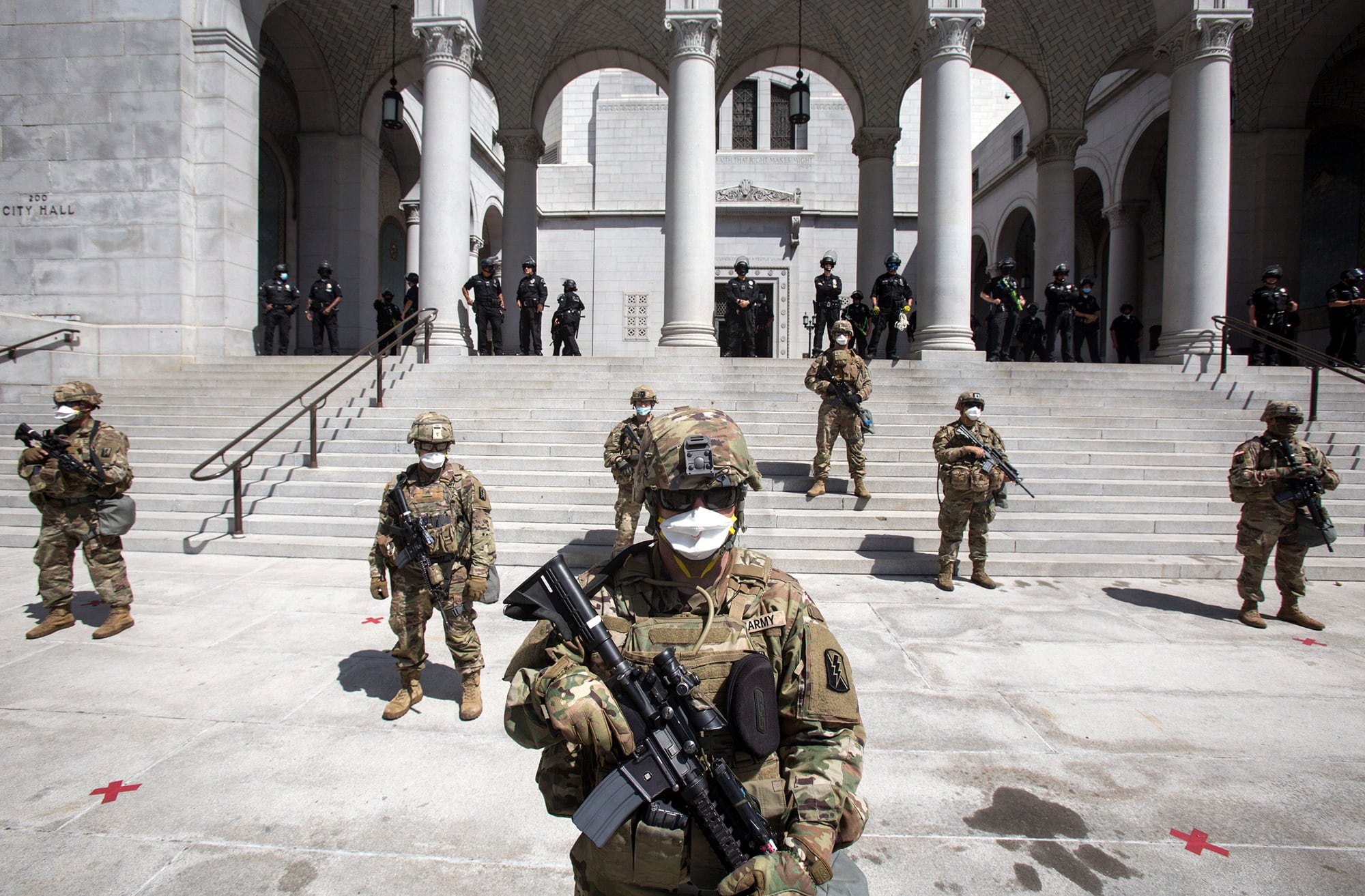WASHINGTON ― The Republican-controlled Senate rejected a bipartisan measure to block the military from giving offensive surplus equipment to state and local U.S. police departments.
The Senate voted 51-49 on the proposed amendment to the 2021 National Defense Authorization Act. The action comes amid civil unrest and a national debate over race and policing in the wake of George Floyd’s death ― and amid lobbying from police organizations to maintain the program.
The amendment from Sen. Brian Schatz, D-Hawaii, was to ban transfers of grenade launchers, bayonets, drones, tracked armored vehicles, and high-powered firearms and ammunition, but not prohibit defensive equipment, like body armor.
The Senate voted 90-10 to adopt a narrower amendment that would would ban some lethal equipment — like weaponized, tracked vehicles and drones as well as lethal grenades. The amendment also added training requirements in deescalation techniques and protecting citizens’ constitutional rights for those who receive the equipment.
RELATED

Senate Armed Services Committee Chairman Jim Inhofe sponsored that measure, arguing the program has successfully transferred more than $7 billion in equipment to police over the past few decades.
“Defunding and de-equipping our law enforcement agencies simply won’t fix anything,” said Inhofe, R-Okla. “Making sure they have the right equipment and the right training will.”
In 2017, President Donald Trump reinstated the “1033 Program” after his predecessor, President Barack Obama, curtailed it in the wake of protests in Ferguson, Missouri, over the death of an unarmed black teenager. It’s named for the section of the provision of the 1997 National Defense Authorization Act that established it.
Schatz and others argued that militarizing police damages relations between the public and law enforcement agencies. Sens. Lisa Murkowski, R-Alaska; Kamala Harris, D-Calif.; and Rand Paul, R-Ky., co-sponsored his amendment.
“The last month has made clear that weapons of war don’t belong in police departments,” Schatz said. “We saw the terrifying images: police in military gear storming the streets, combat vehicles rumbling down city blocks, rounds and rounds of tear gas shot at peaceful protesters, frequently without warning and often unprovoked. None of this helps anyone deescalate a crisis.”
Though the equipment was initially supplied through defense contracts, the impact of the program on the defense industry is debatable. When the military holds onto older surplus items, it’s less able to replace them, said Mackenzie Eaglen, a defense budget analyst with the American Enterprise Institute.
“If there are vast sums of ghost fleets, bone yards, and full motor pools with old stuff, Congress is less likely to replenish as quickly,” Eaglen said.
On the other hand, if police departments were to lose access to this equipment from the federal government, they probably won’t buy it out right due to cost, said Andrew Hunter, a former Pentagon acquisition official now with the Center for Strategic and International Studies.
“If this equipment didn’t go to law enforcement, it might modestly increase the amount of used equipment available on the international market, but I don’t think it moves the needle for industry much,” Hunter said.
Joe Gould was the senior Pentagon reporter for Defense News, covering the intersection of national security policy, politics and the defense industry. He had previously served as Congress reporter.




